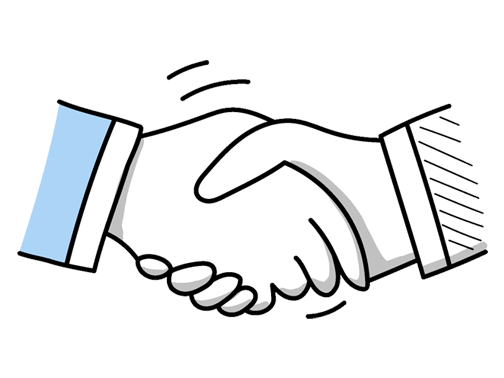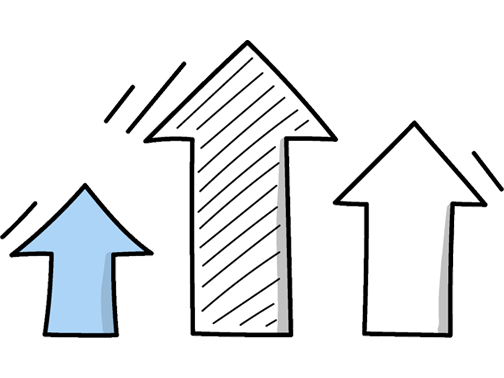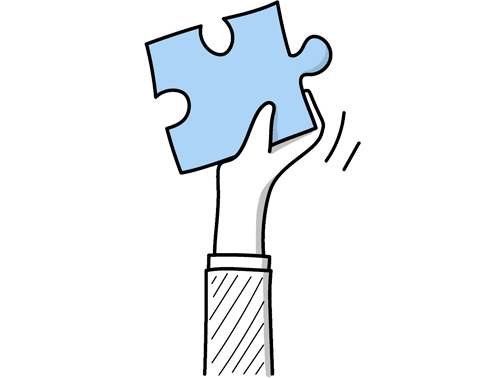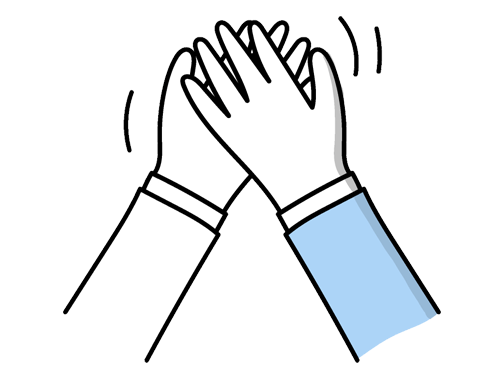Paint Shop Manager Interview Questions (2025 Guide)
Find out common Paint Shop Manager questions, how to answer, and tips for your next job interview
Practice Interviews Online - Identify your strengths and weakness in a realistic Paint Shop Manager mock interview, under 10 minutes
Practice Now »Paint Shop Manager Interview Questions
What they want to know is how you keep customers informed and satisfied by understanding their needs and communicating clearly throughout the project. You need to say you actively listen and ask questions to grasp their expectations, explain technical details simply, and regularly update them on progress or any changes.
Example: When working with customers on paint projects, I make sure to really listen to what they want and ask questions to clarify. I break down any technical details into straightforward language so they feel confident in the choices. Throughout the process, I keep them informed about progress and any changes, so there are no surprises. For example, I once updated a client daily when unexpected delays happened, which helped maintain trust and satisfaction.
Questions like this assess your ability to manage and motivate your team through constructive feedback. You need to explain that you conduct regular, honest evaluations focused on strengths and areas for improvement, and you provide feedback that is clear, supportive, and aimed at helping team members grow.
Example: When conducting performance evaluations, I focus on open, honest conversations that highlight strengths and areas for growth. I make sure feedback is clear and constructive, often linking it to real examples, like when a team member improved efficiency by adjusting workflow. This approach builds trust and motivates the team, helping us continuously improve while maintaining a positive, supportive environment.
This question checks your ability to ensure a safe working environment by systematically identifying and addressing hazards. You need to explain how you schedule regular audits using checklists, document and report findings clearly, communicate with your team and management, and follow up with training or corrective actions to maintain and improve safety standards.
Example: In the paint shop, I start by walking through the area with a clear checklist, ensuring we cover equipment, ventilation, and PPE use. I take detailed notes of any concerns and share these directly with the team and management to address quickly. Regular follow-ups help us maintain high safety standards and adapt to any new risks, keeping everyone safe and engaged in continuous improvement.
This interview question aims to assess your problem-solving skills and your ability to improve processes under pressure. You need to clearly describe a specific paint shop issue you encountered, explain the actions you took to analyze and fix it, and highlight the positive results achieved.
Example: In a previous role, we faced frequent paint defects causing delays. I gathered the team to review processes and pinpointed issues with spray equipment calibration. We implemented regular maintenance checks and staff training on equipment use. This not only improved finish quality but also reduced rework by 30%, helping us meet deadlines and boost overall productivity.
Employers ask this to see how you prioritize tasks and allocate resources under pressure. You need to explain that you prioritize tasks based on urgency, delegate work efficiently, and use scheduling tools to keep the workflow smooth.
Example: In a busy paint shop, I prioritise clear communication and planning. I break down tasks by urgency and team strengths, ensuring resources are allocated where they’re most needed. For example, scheduling regular briefings helps the team stay aligned and quickly address any bottlenecks. Staying flexible is key too—adjusting plans as issues arise keeps everything on track without sacrificing quality or deadlines.
This question assesses your knowledge of critical equipment and your responsibility in maintaining high-quality operations. You need to name essential tools like spray guns, paint booths, mixers, and compressors, and explain that you keep them well-maintained through regular cleaning, calibration, and safety checks to ensure optimal performance and finish quality.
Example: In a paint shop, key tools include spray guns, air compressors, mixing booths, and ventilation systems. Keeping these in good shape means regular cleaning, routine checks, and timely servicing to prevent breakdowns. Well-maintained equipment not only ensures a quality finish but also keeps the team safe by reducing risks like contamination or fumes. For example, regularly changing spray gun nozzles helps maintain a smooth, even coat every time.
Interviewers ask this to see if you can lead effectively and keep your team productive under pressure. You need to say you communicate clear goals, recognize achievements, and provide support and training to help your team succeed.
Example: I focus on creating an environment where everyone feels valued and clear about their goals. I keep communication open, celebrate small wins, and offer support when challenges arise. For example, when deadlines get tight, I check in regularly to keep morale up and help problem-solve. Understanding individual strengths and encouraging collaboration really drives consistent, high-quality results from the team.
Employers ask this question to see how you manage conflicts and ensure customer satisfaction, which is crucial for maintaining the shop’s reputation. You need to say that you listen carefully to the customer, identify the problem, offer a solution, and follow up to make sure they are happy with the outcome.
Example: When a customer raises concerns about paint quality or service, I listen carefully to fully understand their issue and reassure them that it’s being taken seriously. I then work quickly with my team to identify the root cause and implement a practical solution. Keeping the customer informed throughout helps build trust—like once when I resolved a delay by personally overseeing the finish, turning a complaint into positive feedback.
This question helps assess your ability to lead and keep the team focused on productivity and quality. You need to explain how you set clear, measurable goals like daily production targets, communicate them through regular meetings, and monitor progress with feedback sessions to ensure everyone stays aligned.
Example: I start by setting clear, practical targets that everyone can relate to, like daily output or quality standards. I make sure to discuss these openly during team meetings and one-on-ones, so everyone knows what’s expected. Throughout the week, I check progress regularly and offer feedback, celebrating wins and addressing issues early. This keeps the team motivated and focused, helping us meet deadlines and maintain high-quality work.
Questions like this help interviewers see that you prioritize a safe work environment and can act quickly to prevent accidents. You need to describe a specific safety issue you identified, explain how you fixed it, and highlight the measures you put in place to keep the shop safe going forward.
Example: In a previous role, I noticed a team member using damaged spray equipment, which posed a risk. I paused the work, addressed the issue directly, and ensured the equipment was repaired before continuing. I then reinforced safe practices through a quick team briefing. Keeping safety front of mind is essential, so regular checks and open communication became part of our routine to prevent similar issues.
Hiring managers ask this question to see how you engage with customers and ensure their satisfaction, which is crucial for repeat business and a strong reputation. You need to explain that you communicate proactively with customers, keep them updated on progress, listen carefully to their concerns, and consistently deliver high-quality work to build trust.
Example: Building strong relationships starts with keeping open lines of communication, checking in regularly to understand their needs and any concerns. When issues arise, I focus on finding practical solutions quickly, showing that I’m dependable and value their time. For example, if a delivery is delayed, I keep them updated and offer alternatives, which helps maintain trust and shows that I’m committed to getting the job done right.
This question assesses your ability to maintain a safe workplace by implementing and enforcing effective safety measures. You need to explain that you establish regular safety briefings and training, conduct routine inspections to ensure compliance, and continuously review and update protocols to prevent incidents and improve safety.
Example: In the paint shop, safety starts with clear guidelines everyone understands, from proper PPE to ventilation checks. I regularly walk the floor to ensure these standards are followed and hold briefings to address any concerns. When near-misses happen, we review and adjust procedures promptly. It’s about keeping the team safe through constant vigilance and learning from every situation to prevent risks before they escalate.
What they want to know is how you systematically find the root cause of paint or equipment issues and solve them efficiently. You need to explain that you analyze the problem, adjust equipment or processes as needed, and work closely with your team to prevent it from happening again.
Example: When issues arise with paint application or equipment, I first gather the team to understand the problem fully and trace it back to its source, whether that’s material, technique, or machine-related. Then, we work together on solutions, like adjusting techniques or scheduling maintenance. Keeping open communication helps us spot patterns early and avoid the same issues down the line, maintaining quality and efficiency in the paint shop.
This interview question aims to assess how you prioritize safety and ensure your team is well-informed and compliant with safety standards. You need to explain the specific training programs you conduct, how you engage your team through interactive sessions, and how you monitor compliance through regular audits and follow-ups.
Example: In the paint shop, I run regular hands-on safety sessions tailored to our tasks, ensuring everyone knows procedures inside out. I encourage questions and practical demonstrations to keep the team engaged and confident. To maintain standards, we conduct routine spot checks and review any incidents together, reinforcing a culture where safety is a shared responsibility. For example, after a recent near-miss, we updated training to address the issue promptly.
Questions like this assess your ability to maintain high standards and consistency in your team's work. You need to say that you implement standardized procedures, conduct regular quality inspections, and provide ongoing training to ensure every paint job meets set quality criteria.
Example: To maintain a high standard of paint application, I’ve found it crucial to establish clear processes everyone follows, from mixing to spraying. Regular checks help catch any issues early, and I make sure the team is well-trained and comfortable with the techniques. For example, we hold brief refresher sessions when introducing new materials, which keeps consistency strong across all jobs.
Employers ask this question to understand how you leverage technology to streamline operations, maintain quality, and improve efficiency in the paint shop. You need to mention specific software like ERP systems for scheduling, digital tools for quality monitoring, and data analytics for optimizing material use.
Example: In managing paint shop operations, I rely on scheduling software to coordinate workflows and monitor progress in real-time. Tools like digital quality tracking systems help catch defects early, maintaining high standards. We also use data analytics to identify inefficiencies, which has led to reducing waste and optimizing paint usage. For example, implementing a touchless mixing system improved consistency and cut down on material costs significantly.
Employers ask this to see if you actively keep up with changing regulations to maintain a safe and legal work environment. You need to say that you regularly review updates from official sources like the HSE, update safety protocols accordingly, and conduct audits to ensure continuous compliance.
Example: I keep up with industry regulations by regularly checking updates from official sources and trade organisations. In the paint shop, I make sure our procedures reflect any changes and train the team accordingly. To stay on track, I schedule regular audits and risk reviews, which help catch any issues early and keep us fully compliant. This approach has helped us avoid fines and maintain a safe, efficient working environment.
Employers ask this question to see how you use customer insights to improve service quality and ensure satisfaction. You need to explain the specific ways you collect feedback, how you analyze it to find patterns, and the concrete steps you take to make improvements based on that feedback.
Example: In my experience, I keep communication channels open by encouraging customers to share their thoughts after every job, whether through quick surveys or informal chats. We review this feedback regularly to spot any recurring issues, then work closely with the team to adjust our processes. For example, after noticing concerns about drying times, we optimized our scheduling, which improved customer satisfaction noticeably.
What they want to know is if you understand the materials you work with and can choose the right paint for different surfaces and conditions. You need to clearly mention the types of paints and coatings you’ve used and explain why you selected them for specific jobs.
Example: Certainly. I’ve worked with a variety of coatings including epoxy for its durability, polyurethane for its glossy finish, and powder coatings which offer excellent resistance. In previous roles, I’ve overseen paint applications on both metal and plastic components, ensuring proper surface prep and curing to achieve consistent quality. Understanding how each type behaves helps me manage processes effectively and deliver the best results for different products.
This question helps the interviewer see how you approach challenges and apply creativity to improve processes in the paint shop. You need to clearly describe the problem you identified, the innovative solution you implemented, and the positive results that followed.
Example: In a previous role, we faced recurring delays due to paint drying times disrupting schedules. I experimented with adjusting airflow and temperature controls in the drying booths, balancing efficiency without compromising quality. This creative tweak cut drying time by 20%, improving throughput and reducing overtime costs. It was rewarding to see a simple change make such a practical difference for the team and overall productivity.
Interviewers ask this question to see how you handle interpersonal challenges and maintain a productive work environment. You need to describe a specific situation where you listened to both sides, communicated clearly, and found a solution that kept the team working well together.
Example: In my previous role, two team members disagreed over the best technique for a complex paint job. I brought them together, listened to both sides, and encouraged a trial of each method. We then reviewed the results as a team, which not only resolved the issue but also improved our overall process. This approach helped maintain respect and collaboration within the team.
This interview question aims to see your dedication to customer satisfaction and problem-solving skills. Focus on a specific situation where you took extra steps to meet a customer’s needs, and clearly describe the positive outcome of your actions.
Example: In a previous role, a client needed a rush order on a paint job with a tight deadline. I coordinated with my team to rearrange schedules and source the right materials quickly. We worked extra hours to ensure the finish met their standards and delivered early. The client appreciated the effort, and it strengthened our relationship for future projects. It felt good to support both my team and the customer in that way.
This question assesses your ability to optimize operations and improve productivity in the paint shop. You need to explain how you analyze workflows to find bottlenecks, make targeted changes to fix them, and track results to ensure improvements work.
Example: When I look for inefficiencies in the paint shop, I start by observing daily operations closely to spot any slow points or wasted time. I then work with the team to introduce small, practical changes—like adjusting task sequences or improving equipment use. After that, I keep a close eye on the results, gathering feedback and data to make sure those changes are really making a difference.
This interview question evaluates your technical knowledge and problem-solving skills in color matching, as well as your ability to communicate and collaborate effectively. You should explain the step-by-step process of preparing and adjusting paint samples, describe how you identify and fix color discrepancies, and highlight how you work with your team to ensure precise results.
Example: When matching paint colours, I start by carefully assessing the original shade under proper lighting, then mix small batches to get as close as possible. If it’s challenging, I adjust tone and saturation incrementally, keeping notes throughout. Clear communication with the team and customer ensures expectations align. For example, on a tricky metallic finish, I involved the client in choosing the best option, which helped us achieve a satisfying result together.
Interviewers ask this to see how you stay organized and efficient under pressure. You need to say you assess urgency and impact, create a clear plan, and adjust priorities as needed to ensure timely, quality results.
Example: In a busy paint shop, I focus on clear communication and setting realistic deadlines. I break down bigger projects into manageable steps and stay flexible when priorities shift. For example, if urgent maintenance arises, I quickly reassign tasks to keep production on track without compromising quality. Keeping the team informed helps us adapt smoothly and meet targets even under pressure.
Ace your next Paint Shop Manager interview with even more questions and answers
Common Interview Questions To Expect
The interviewer is looking for insight into your long-term aspirations and how they align with the company's goals. Be honest, specific, and show ambition.
Example: My career goal is to continue growing as a leader in the paint shop industry, eventually becoming a regional manager overseeing multiple locations. I am committed to improving efficiency, quality, and safety in all aspects of the paint shop operations. Ultimately, I aim to contribute to the company's success and drive innovation in the industry.
The interviewer is looking for a candidate who has done their research on the company, understands its values, products/services, and overall mission. Answers should demonstrate knowledge and interest in the company.
Example: I've done some research on your company and I know that you specialize in producing high-quality paints for various industries. I also understand that your company values sustainability and innovation in your products. I'm excited about the opportunity to contribute to a company that aligns with my values and expertise in paint management.
Interviewers are looking for honesty, professionalism, and a positive attitude in your response. Be prepared to explain any reasons for leaving your previous job in a constructive manner.
Example: I left my last job because I was looking for new challenges and opportunities for growth. I felt like I had reached a plateau in my role and wanted to expand my skills in a different environment. I am excited about the possibility of bringing my experience to this new position as a Paint Shop Manager.
The interviewer is looking for your commitment to ongoing learning and growth in your field. You can answer by discussing courses, certifications, conferences, or other ways you plan to stay current in your industry.
Example: I'm always looking to stay up-to-date in the paint industry, so I plan on taking some courses on new techniques and technologies. I also want to attend some industry conferences to network and learn from other professionals. Overall, my goal is to continuously improve and stay ahead of the curve in my role as a Paint Shop Manager.
The interviewer is looking for insight into your personal motivations and what drives you to succeed in your career. Answers should demonstrate passion, dedication, and alignment with the company's values.
Example: What motivates me is the opportunity to lead a team and see them succeed in producing high-quality paint finishes. I am driven by the challenge of meeting deadlines and exceeding customer expectations. I am also motivated by the continuous improvement and innovation in the paint industry.
Company Research Tips
The company's website is a treasure trove of information. Look for details about the company's history, mission, and values. Pay special attention to any information related to the paint shop or the manufacturing department. This will give you an understanding of the company's products, services, and customer base. Also, check out the 'News' or 'Blog' section to stay updated with the latest company news and developments.
Tip: Look for any specific projects or initiatives that the company has undertaken in the paint shop. This can give you talking points during the interview and show that you've done your homework.
Social media platforms like LinkedIn, Facebook, and Twitter can provide valuable insights into the company's culture and values. Look at the company's posts and interactions with customers and employees. LinkedIn can also give you information about the company's size, industry, and employee roles. You can also find information about the company's competitors and market position.
Tip: Follow the company on these platforms to stay updated with their latest news and announcements. Also, look at the profiles of current employees, especially those in the paint shop or manufacturing department.
Understanding the industry in which the company operates is crucial. Look for industry trends, challenges, and opportunities. This will help you understand the company's position in the market and how it differentiates itself from competitors. You can use resources like industry reports, trade publications, and news articles for this research.
Tip: Try to understand how the company's paint shop fits into the larger industry context. This can help you come up with ideas on how to improve processes or drive growth in the paint shop.
Researching the company's main competitors can give you a sense of the competitive landscape. Look at the competitors' products, services, and strategies. This can help you understand what makes the company unique and how it can improve.
Tip: Think about how the company's paint shop can differentiate itself from competitors. This can give you ideas for potential improvements or innovations.
What to wear to an Paint Shop Manager interview
- Clean, pressed button-down shirt
- Dark-coloured trousers or chinos
- Polished, closed-toe shoes
- Minimal, professional jewellery
- Neat, well-groomed hairstyle
- Light, neutral makeup for women
- Clean, trimmed nails
- Avoid overly bright colours
- Carry a neat, professional bag
- Wear a belt that matches your shoes





